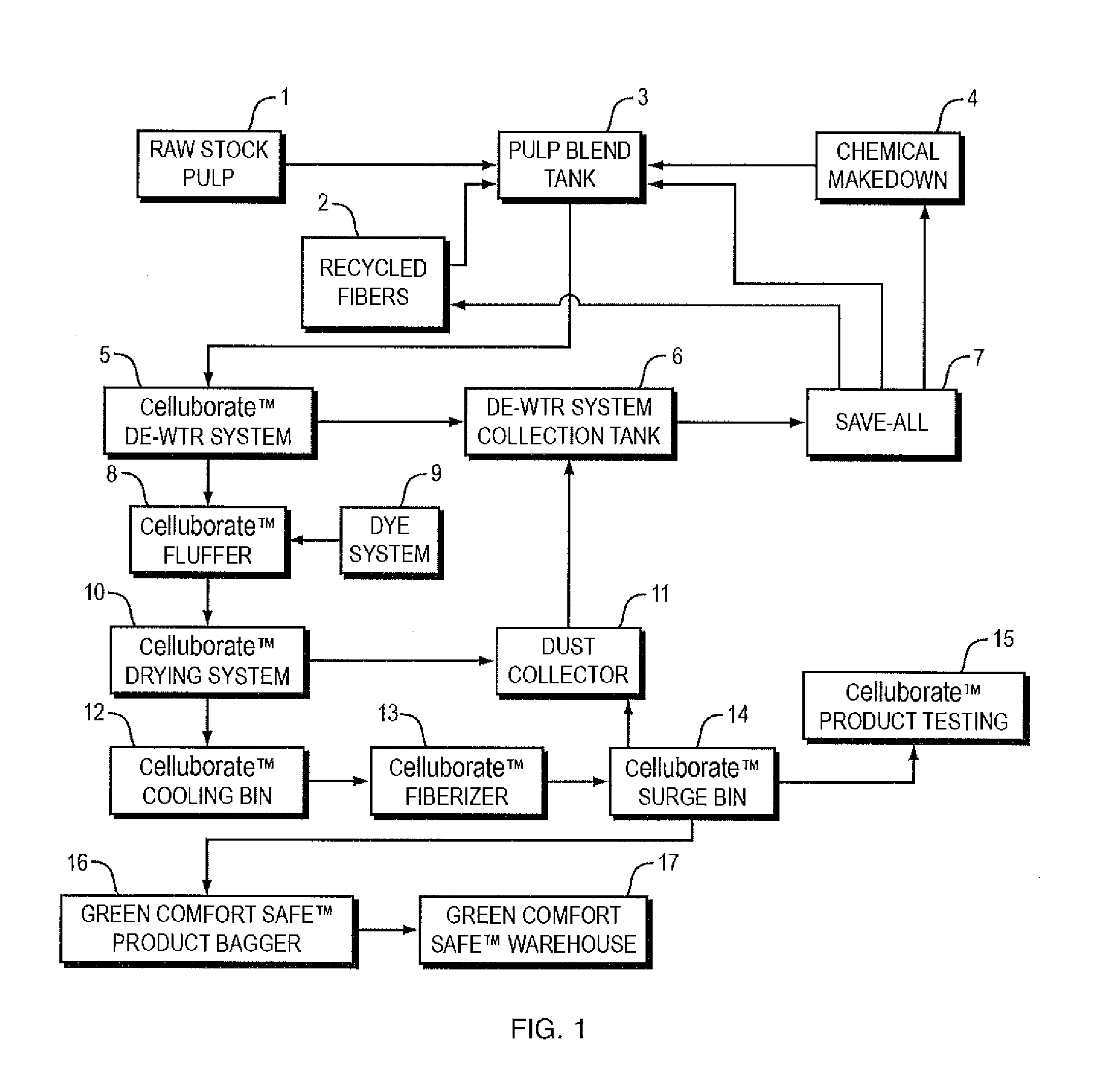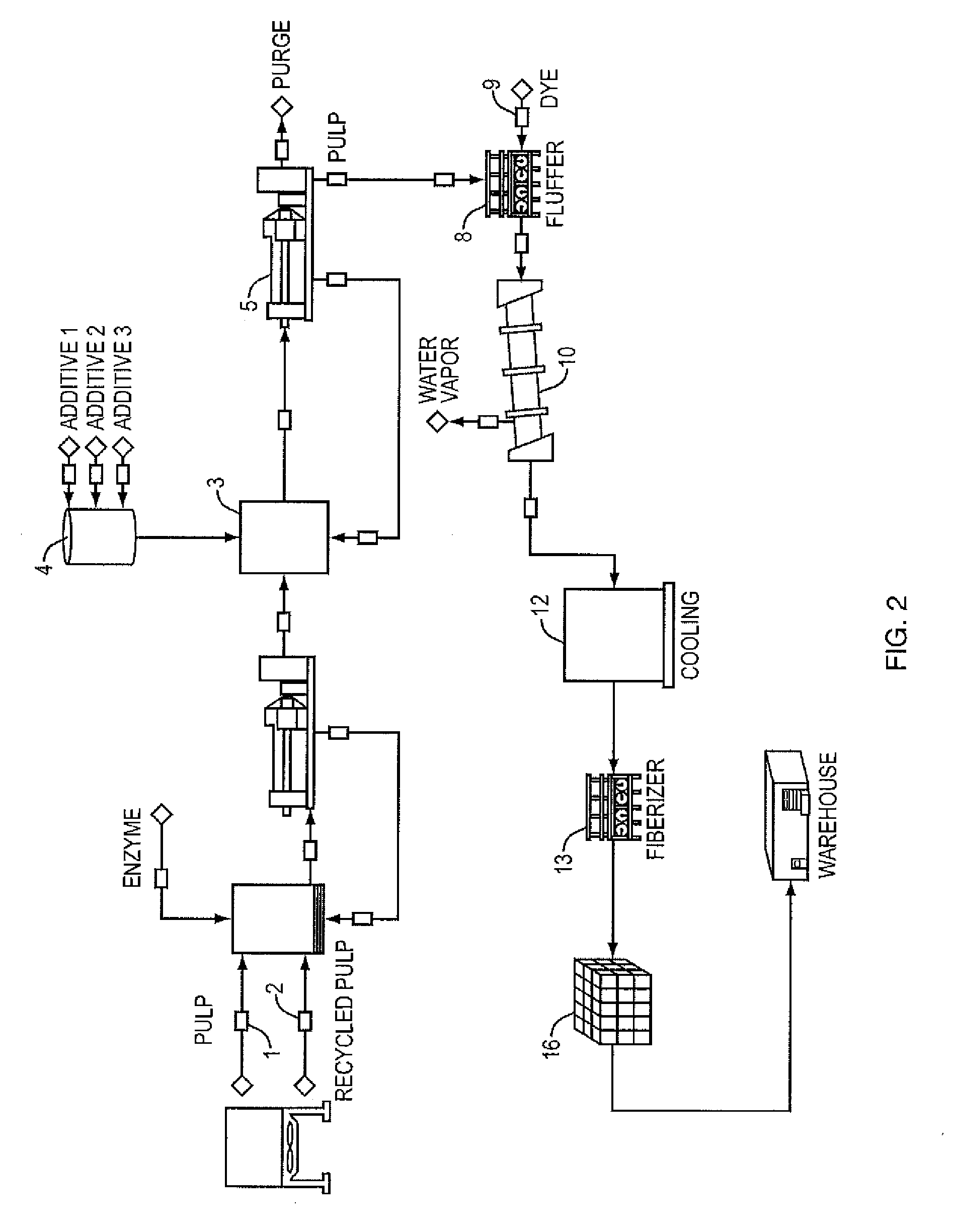Method for Making Fire Retardant Materials and Related Products
a technology of fire retardant materials and related products, applied in the field of making fire retardant materials, can solve the problems of insufficient material production, insufficient cost of the fabrication method mentioned above, and insufficient material production of conventional recycled materials used as feedstock, etc., and achieve the effect of improving the fire retardant application method
- Summary
- Abstract
- Description
- Claims
- Application Information
AI Technical Summary
Benefits of technology
Problems solved by technology
Method used
Image
Examples
Embodiment Construction
[0022]While the follow description is directed to the embodiment of the invention wherein an organic cellulosic insulation is made, it is to be understood that the invention is not limited thereto. Instead, the present invention provides for the effective application of a fire retardancy chemical in liquid form to or in a feedstock material in a cost effective way prior to drying of the combination of the two. Additionally, the present invention provides for the combining of two fire retardancy chemicals to improve the solubility of both for a desired increase in concentration of the fire retardancy chemical applicable to the feedstock material.
[0023]Referring generally to FIGS. 1 and 2, a cellulose insulation of the present invention referred to herein as Celluborate is a new fiber that is created when pulp fibers (raw stock 1) from a kraft or groundwood (stone or thermo-mechanical) pulp mill are interspersed with recycled material, such as newsprint (ONP 2) or OCC, at a 1% to 50% ...
PUM
| Property | Measurement | Unit |
|---|---|---|
| temperature | aaaaa | aaaaa |
| fire retardant | aaaaa | aaaaa |
| time | aaaaa | aaaaa |
Abstract
Description
Claims
Application Information
 Login to View More
Login to View More - R&D
- Intellectual Property
- Life Sciences
- Materials
- Tech Scout
- Unparalleled Data Quality
- Higher Quality Content
- 60% Fewer Hallucinations
Browse by: Latest US Patents, China's latest patents, Technical Efficacy Thesaurus, Application Domain, Technology Topic, Popular Technical Reports.
© 2025 PatSnap. All rights reserved.Legal|Privacy policy|Modern Slavery Act Transparency Statement|Sitemap|About US| Contact US: help@patsnap.com



